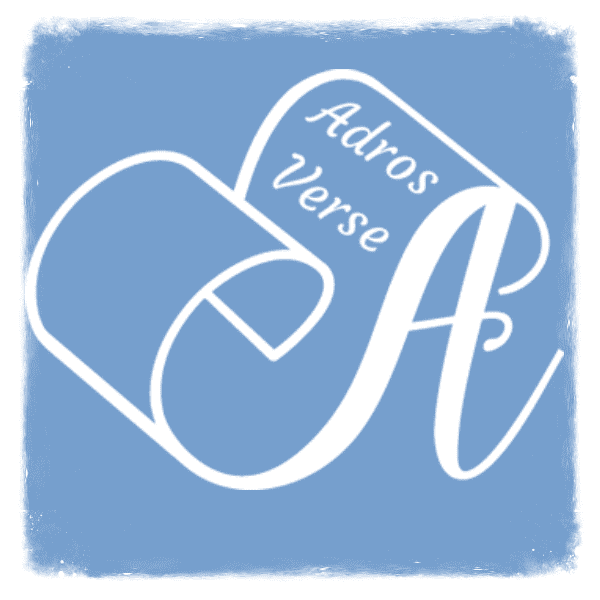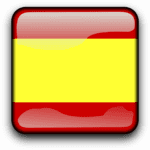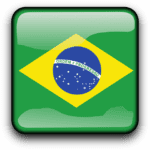Each noun and adjective in French has a gender. Nouns and adjectives in French have only two genders: masculine and feminine. There is no neuter gender. Throughout the lessons, we use the superscripts m and f to refer to masculine and feminine genders, respectively.
The adjective follows the noun it describes in gender and number. The only certain way to determine the gender of a noun is by looking it up in a dictionary. Nevertheless, there are some general rules that can help you be right most of the time. Remember, however, that these are general rules, and there are many exceptions.
1. Gender of a Noun
The main rule is that a noun that ends with “-e” or “-ion” is likely feminine, except for nouns ending in “-ge” or “-isme,” which are likely masculine even though they end with “-e.” Any other noun in French that does not end with “-e” is likely, but not certainly, masculine.
Of course, there will be some obvious masculine and feminine nouns. For instance, we know that “homme” (man) and “prince” (prince) are masculine regardless of the above rule.
Let us look at some examples of nouns that follow the general rule as well as some exceptions:
| Gender | Ending | Nouns that follow the rule | Exceptions |
| feminine | -e | couverture (blanket), fenêtre (window), plante (plant) | spectacle (spectacle), stade (stadium), silence (silence), incendie (fire) |
| -ion | destination (destination), nation (nation), production (production) | avion (plane), camion (truck) | |
| masculine | -ge | âge (age), garage (garage), nuage (cloud), stage (internship), orage (thunderstorm), village (village), siège (seat), piège (trap), liège (cork), collège (college) | cage (cage), page (page), plage (beach), image (image), rage (rage) |
| -isme | cyclisme (cycling), prisme, schisme, tourisme (tourism) | – | |
| masculine | Other | bureau (office), papier (paper), journal (newspaper), bras (arm), changement (change), lit (bed) | eau (water), peau (skin), souris (mouse) |
Different Meaning by Gender
Some words have a different meaning when used in the masculine form versus when used in the feminine form. For example:
| livrem | book | livref | pound |
| modem | mode, way or method | modef | fashion |
| capitalm | capital (money) | capitalef | capital (city) |
| tourm | tour | tourf | tower |
| mémoirem | report | mémoiref | memory |
| postem | job | postef | post office |
| vasem | vase | vasef | mud |
Other Exceptions
Notice that many words that end in “-me” and originate from Greek are masculine, for example:
| problèmem | problem | dramem | drama |
| systèmem | system | dilemmem | dilemma |
| thèmem | topic or theme | diagrammem | diagram |
| diplômem | diploma | poèmem | poem |
This exception does not apply to words that do not originate from Greek, such as “forme” (form) and “plateforme” (platform), which are feminine.
In addition, there are many foreign nouns that have made inroads into the French life and dictionary such as “sport” and “Internet.” In general, the majority of these nouns are masculine.
Some nouns that refer to people can be masculine or feminine. The most common pattern to form the feminine noun from a masculine noun is to add an “e” at the end. For example:
| étudiantm | student | étudiantef | student |
| ingénieurm | engineer | ingénieuref | engineer |
Nouns that end with a vowel followed by “n” or “t” often double the last consonant and add an “e” at the end. For example:
| lionm | lion | lionnef | lioness |
| chatm | cat | chattef | cat |
Nevertheless, this is not the only gender pattern in French. Other patterns include:
| -teur/-trice | actor/actress | acteurm | actricef |
| director | directeurm | directricef | |
| -eur/-euse | hair dresser | coiffeurm | coiffeusef |
| waiter/waitress | serveurm | serveusef | |
| -e/-esse | poet | poètem | poétessef |
| host/hostess | hôtem | hôtessef |
Most nouns that end in “-iste,” “-yste,” or “-naire” can refer to masculine or feminine people performing a role or profession. For example:
| dentistem,f | dentist | analystem,f | analyst |
| artistem,f | artist | pianistem,f | pianist |
| vétérinairem,f | veterinary | partenairem,f | partner |
| millionairem,f | millionaire | révolutionnairem,f | revolutionary |
Others may only have one form (masculine or feminine) regardless of the gender of the person that the noun refers to, for example:
| personnef | person | victimef | victim |
| professeurm | teacher | médecinm | doctor |
| écrivainm | writer | jugem | judge |
It is also commonly acceptable to add the word “femme” (woman) to describe a female with a non-form changing masculine noun, e.g., “une femme médecin” (a female doctor).
Names of Countries
In general, most countries ending with “-e” are feminine, e.g., “la France” (France). Exceptionally, the following six countries end with “-e” but are masculine:
| Mexiquem | Mexico | Belizem | Belize |
| Cambodgem | Cambodia | Mozambiquem | Mozambique |
| Zimbabwem | Zimbabwe | Surinamem | Surinam |
Most other countries that do not end in “-e” are masculine. Here are some examples:
| Marocm | Morocco | Iranm | Iran |
| Canadam | Canada | Portugalm | Portugal |
Notice that most countries are often preceded by a definite article, while only a few cannot be used by a definite article, such as:
| Bahreïnm | Bahrain | Chypref | Cyprus |
| Singapourm | Singapore | Haïtim | Haiti |
| Cubam | Cuba | Sri Lankam | Sri Lanka |
| Maltef | Malta | Monacom | Monaco |
Some countries are always in plural form, such as:
| États-Unism | United States | Pays-Basm | Netherlands |
| Philippinesf | Philippines | Bahamasm | Bahamas |
2. Gender of an Adjective
An adjective follows the noun it describes in gender and number.
Adjectives in French, unlike in English, come after the noun they describe, for example, “bâtiment historique” (historic building). There are some exceptions to this rule, for example, “grande ville” (big or great city). Many adjectives that come before the noun are indefinite adjectives, which are covered in Level III, Lesson 3.
Most adjectives form the feminine singular by adding a final “-e” to the masculine singular form. For example, the feminine form of “grand” is “grande.” However, there are many exceptions that follow different patterns. The following are the most common patterns:
1. Adjectives ending in “-eux”
The feminine form of masculine adjectives ending in “-eux” is often obtained by changing the final “-eux” to “-euse.” For instance, the feminine singular form of “nerveux” is “nerveuse.” Similarly, the feminine form of “sérieux” is “sérieuse.” Here are some examples:
| happy | heureuxm | heureusef |
| joyful | joyeuxm | joyeusef |
| serious | sérieuxm | sérieusef |
| curious | curieuxm | curieusef |
| nervous | nerveuxm | nerveusef |
| religious | religieuxm | religieusef |
2. Adjectives ending in “-é”
The feminine form of masculine adjectives ending in “-é” is often obtained by adding an extra “-e”:
| tired | fatiguém | fatiguéef |
| busy | occupém | occupéef |
| complicated | compliquém | compliquéef |
| salty | salém | saléef |
3. Adjectives ending in a silent “-e”
The feminine form of masculine adjectives ending in a silent “-e” is the same. For instance, the feminine singular form of “drôle” is the same, i.e., “drôle.” Here are some examples:
| clean | proprem | propref |
| comfortable | confortablem | confortablef |
| dirty | salem | salef |
| easy | facilem | facilef |
| empty | videm | videf |
| funny | drôlem | drôlef |
| honest | honnêtem | honnêtef |
| poor | pauvrem | pauvref |
| pleasant | aimablem | aimablef |
| sad | tristem | tristef |
| weak | faiblem | faiblef |
4. Adjectives ending in “-f”
The feminine form of masculine adjectives ending in “-f” is often obtained by changing the final “-f” to “-ve”:
| active | actifm | activef |
| attractive | attractifm | attractivef |
| decisive | décisifm | décisivef |
| positive | positifm | positivef |
| negative | négatifm | négativef |
| widower/widow | veufm | veuvef |
5. Adjectives ending in a consonant “l,” “n,” or “s”
The feminine form of many masculine adjectives ending in the consonant “l,” “n,” or “s” is obtained by adding an “-e” to the end of the word and doubling the consonant before the final “-e”:
| cruel | cruelm | cruellef |
| European | européenm | européennef |
| fat | grosm | grossef |
| former, old, or ancient | ancienm | anciennef |
| good | bonm | bonnef |
| kind or nice | gentilm | gentillef |
| low | basm | bassef |
Finally, there are some irregular adjectives that do not follow any pattern and must simply be memorized. Here are some examples:
| beautiful | beaum | bellef |
| dry | secm | sechef |
| false | fauxm | faussef |
| favorite | favorim | favoritef |
| frank | francm | franchef |
| fresh | fraism | fraîchef |
| long | longm | longuef |
| new | nouveaum | nouvellef |
| old | vieuxm | vieillef |
| public | publicm | publiquef |
| soft/sweet | douxm | doucef |
| white | blancm | blanchef |
“Beau” (beautiful), “Nouveau” (new), & “Vieux” (old)
Among the irregular adjectives, there are three adjectives that change form only if they come before a masculine noun that starts with a vowel or mute “h.” The three adjectives are: “beau” (beautiful), “nouveau” (new), and “vieux” (old). Here are some examples:
| beaum (beautiful) | beau pays (beautiful country) | bel animal (beautiful animal) |
| nouveaum (new) | nouveau livre (new book) | nouvel ami (new friend) |
| vieuxm (old) | vieux port (old port) | vieil homme (old man) |
If the noun is feminine or the adjective is placed after the noun, the change of form is not applied even if the noun starts with a vowel or a mute “h.” For example, “Cet animal est beau” (This animal is beautiful), “nouvelle année” (new year), etc.
3. Forming the Plural of a Noun or Adjective
Forming the plural of a singular noun or adjective is often straightforward and resembles the English common way of adding an “-s” at the end of a word. Here are some examples:
| livrem | book | livresm | books |
| chatm | cat | chatsm | cats |
| téléphonem | phone | téléphonesm | phones |
| ballef | ball | ballesf | balls |
| maisonf | house | maisonsf | houses |
Irregular Plurals
However, there are four main categories of nouns that do not follow the above simple rule to form the plural:
1. Nouns ending in “-s,” “-x,” or “-z”
The majority of nouns under this category do not change form in the plural, for example:
| brasm | arm | brasm | arms |
| choixf | choice | choixf | choices |
| gazm | gas | gazm | gasses |
2. Nouns ending in “-au” or “-eu”
Nouns ending in “-au” or “-eu” add an “-x” to the ending to form the plural, for example:
| chapeaum | hat | chapeauxm | hats |
| rideaum | curtain | rideauxm | curtains |
| feum | fire | feuxm | fires |
| lieum | place | lieuxm | places |
A notable exception is “pneum” (tire), whose plural is “pneus.”
3. Nouns ending in “-ail” or “-al”
Nouns ending in “-ail” or “-al” change the ending to “-aux” to form the plural, for example:
| animalm | animal | animauxm | animals |
| chevalm | horse | chevauxm | horses |
| travailm | work | travauxm | works |
| corailm | coral | corauxm | corals |
4. Some nouns ending in “-ou”
The following nouns ending in “-ou” add “-x” to the ending to form the plural. These words need to be memorized.
| bijoum | jewel | bijouxm | jewels |
| cailloum | pebble | caillouxm | pebbles |
| choum | cabbage | chouxm | cabbages |
| genoum | knee | genouxm | knees |
| hiboum | owl | hibouxm | owls |
| poum | louse | pouxm | louses |
| joujoum | toy | joujouxm | toys |
Although the categories above cover most irregular plurals. There are a few words that do not fall under any of these categories. For instance, the plural of “l’œilm” (the eye) is “les yeux” (the eyes). Moreover, some words are only used in plural form such as “ciseauxm” (scissors) and “lunettesf” (glasses).
To form the plural of an adjective, the general rule is to add an “-s” to the end of the adjective, e.g., “petits” is the plural of “petit” (small), with the following exceptions:
1. If the adjective ends with “-s” or “-x,” the plural form is the same as the singular.
For example, “français” is the plural of “français” (French), and “heureux” is the plural of “heureux” (happy).
2. If the adjective ends with “-al” or “-eau,” the plural form ends in “-aux.”
For example, “principaux” is the plural of “principal” (main or principal), and “nouveaux” is the plural of “nouveau” (new).
Other lessons in Level I:










